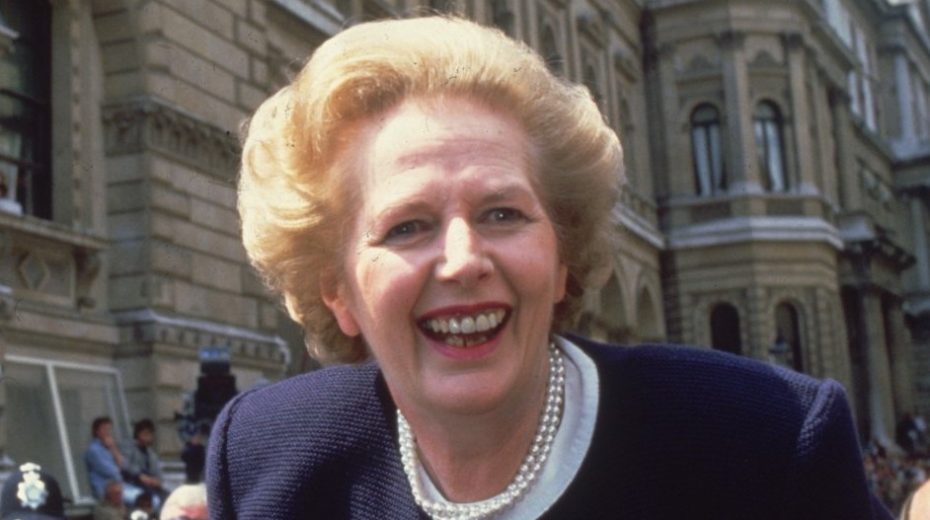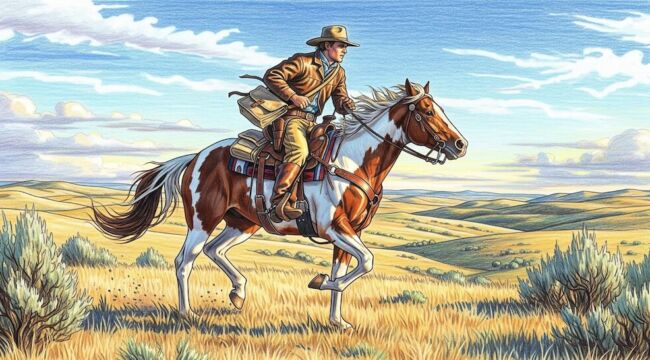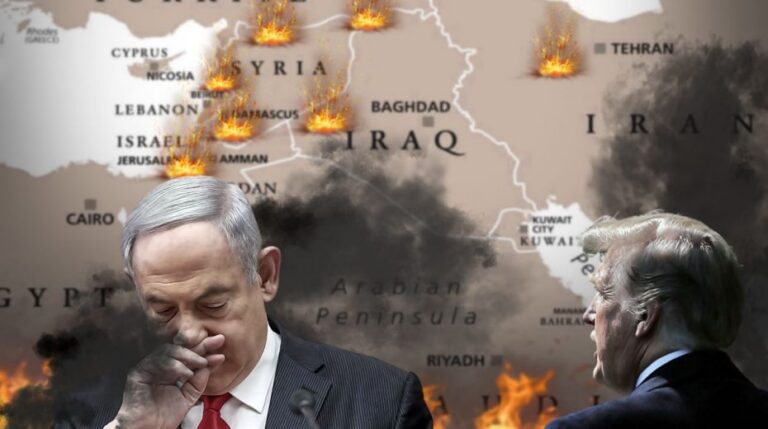
She inspired Irish nationalism
“If God did not exist,” Voltaire wrote, “it would be necessary to invent Him.” Creating deities, however, is a complex task requiring genuine effort and reflection. It’s far simpler to imagine devils, mischievous spirits, or an entire demonology. Especially in youth, one rarely considers being cast within such a sinister order or becoming a demonizer themselves. Yet this outlook captured the essence of Troubles-era Northern Ireland, and increasingly reflects the broader Western world in which we live.
My first recollection of Margaret Thatcher, born a century ago today, was not through images but graffiti on the walls of Brutalist housing blocks. Painted, not sprayed in those times, it depicted Ireland being devoured by Great Britain, with Thatcher’s face dominating the west coast of Scotland. Her eyes were wild and ravenous like Goya’s Saturn as she gnawed on Ulster. I was terrified at the time, though over the years the image became familiar. Later, I witnessed her effigy paraded and burned in various neglected locales marked by government indifference—the sites of Poll Tax riots, post-Hillsborough Liverpool, South Yorkshire mining villages, across Scotland and Wales. Even the music echoed sacrificial undertones—Elvis Costello’s “Tramp the Dirt Down” and Morrissey’s “Margaret on the Guillotine,” the latter attracting attention from Special Branch out of concern it might signal an attempt on the Prime Minister involving a wilted gladioli.
Countless reasons existed for public animosity toward Thatcher—from miners’ strife, Section 28 legislation, the sinking of the Belgrano, to the harsh consequences of deindustrialisation and deregulating finance. In Northern Ireland, her reputation overshadowed even memories of the Black and Tans and Cromwell, entering into the realm of myth. In comparison, traditional supernatural figures like the banshee, dearg due, bánánach, and abhartach appeared almost benign.
Few within Irish Republican circles, past or present, would openly acknowledge it, but Thatcher became the demon Sinn Féin required, turning into one of their strongest unintentional allies. Rallying full resistance against previous Labour and Ted Heath’s governments’ security apparatus had been difficult. Here emerged a tangible antagonist. Seeking to defeat her, they inadvertently forged their own identity.
Thatcher’s introduction to Northern Ireland was a nightmare. Just a month before securing victory in the general election, her Northern Ireland adviser, Airey Neave, was assassinated while leaving the House of Commons. A decorated war hero with a remarkable background—escaping Colditz, delivering indictments at Nuremberg to figures like Goering, Speer, and Hess—he was regarded as formidable. The Irish National Liberation Army, a Marxist offshoot and IRA rival, concealed a bomb beneath his driver’s seat triggered by a mercury tilt switch as his Vauxhall ascended an exit ramp. The attack was ruthlessly symbolic but likely counterproductive if one attributes United Ireland or Catholic civil rights to Republican ambitions—an assumption better avoided.
This moment seemed to herald an IRA triumph. Sensing this, Thatcher reframed the conflict as criminality rather than political struggle, stating, “Northern Ireland is part of the United Kingdom,” “as much as my constituency is.” Given that Finchley was not a place where civil rights protestors faced murders, internment without trial, daily assassinations, or where civilians lost limbs, this claim was misleading. Her push for normalcy highlighted the very abnormal condition endured—a colonized stronghold governed by a warlike police and ceremonial institutions mimicking British pomp. For both the British and southern Irish, Northern Ireland was madness incarnate.
Yet Thatcher was pragmatic beneath the surface. Declassified 1983 documents reveal that she proposed a “tactical withdrawal” to Northern Ireland’s Secretary of State, Jim Prior, only to have it vetoed due to fears it would ignite civil war. Unionists and Loyalists still struggle to accept such dismissals, while deluded Republicans are not about to erase nearly a million of their adversaries when the moment arrives. At that juncture, the conflict was likely to intensify further, a fact recognized by the Republic’s government. This also illustrates how close the IRA came to securing a United Ireland. Meanwhile, high-profile attacks that boosted Republican confidence alienated Irish American supporters enough for the US to reduce aid, forcing Republicans to turn to the lesser known enemies of their enemies for help.
This portrait reveals Thatcher as both a practical leader and an emblem of Northern Ireland’s fractured state. Nonetheless, she remained defiant. Whether motivated by Airey Neave’s death or uncertainty about her position amid powerful men, Thatcher took the conflict personally and ultimately miscalculated. Her objective was not peace but unconditional submission paired with humiliation. Despite abundant counterarguments, the British state alone possessed the means to ease or end the violence—by addressing civil rights concerns kindly, for instance—but Thatcher escalated tensions.
Meanwhile, Sinn Féin’s Danny Morrison’s description of her as “The biggest bastard we have ever known” was astute. Though loathed, there was a grudging recognition of opportunity. Thatcher’s stubborn militarism galvanized Irish nationalists and accelerated the decline of the SDLP’s moderate stance. She intensified the prison protests and hunger strikes, clashing with Sinn Féin in a contest of wills. This struggle painted Sinn Féin as a symbol of strength for Catholics and garnered international media attention following the hunger strikers’ deaths. The events became sacred, featuring saintly starving neo-Catholic martyrs confronting the satanic Thatcher. The former grocer’s daughter was ill-prepared to handle the irrationality of Celtic eschatology.
Thatcher thus provided the adversary that faceless bureaucrats before her had not. Her Iron Lady persona propelled Northern Ireland away from multiple potential outcomes, forcing a stark choice for its people. This dynamic advanced Sinn Féin’s agenda, though they deny it. The tactic aligns with Saul Alinsky’s seventies-era activist strategy—creating or exploiting a shared enemy to consolidate and radicalize opposition, marginalizing more moderate voices. I witnessed this in Derry where the SDLP—brave activists of civil rights marches with trade union and educational roots—were instantaneously seen as the “Stoop Down Low Party” within their community following Thatcher’s emergence.
The Hunger Strikes epitomized this shift. Thatcher’s framing of the Troubles as criminal rather than political backfired, inadvertently revealing to Sinn Féin and Bobby Sands the electoral power available. Their “Armalite and ballot box” approach represented an evolutionary breakthrough. Thatcher’s cold realism shone through when she said: “It would seem that dead hunger strikers, who have extinguished their own lives, are of more use to PIRA than living members.” Yet her claim that “PIRA have put the Catholic Community on the rack” ignored the far harsher treatment the British state had inflicted on Catholics.
Looking back, two key factors made armed conflict unsustainable. First, the role of MI5 and informants—still unclear regarding Sinn Féin infiltration and its influence on policy. Thatcher deserves some credit here due to increased intelligence involvement (though the relationship with Loyalist death squads remains controversial). Second, Ulsterisation, an approach predating Thatcher, which aimed to keep the conflict contained within Northern Ireland’s borders. This strategy deemed the local population expendable and recognized that impactful IRA attacks were more likely on the mainland—bombings like Canary Wharf intensified political negotiations. Both methods were starkly cynical yet effective.
Though Thatcher claimed the wily Dubliner Edmund Burke as her mentor, her ego prevented her from heeding his wisdom: “It is ordained in the eternal constitution of things, that men of intemperate minds cannot be free. Their passions forge their fetters.” Her adversaries shared similar arrogance, often boasting about their near-success in Brighton with grim mantras like, “Today we were unlucky, but remember we only have to be lucky once — you will have to be lucky always,” a refrain ultimately proven naive. Had they succeeded, martial law and increased suffering for Northern Catholics would have likely followed, inadvertently strengthening Sinn Féin’s position—a probable true aim beyond United Ireland or civil rights equality.
Today, Sinn Féin resembles the modern SNP under Sturgeon—powerful yet burdened by violent legacies involving weapons stockpiles and bodies as grimly unavoidable as those of the British or Loyalists. Their vision of a United Ireland is one shaped under their control and for their advantage. Should it materialize, accommodating nearly a million Unionists will be necessary. Given the dire conditions south and north, the Ireland that emerges will be unrecognizable compared to the dream we once held and demands a fresh imagining that honors past victims without reviving old demons. Their era has arrived—and, like Thatcher’s, has now ended.
Original article: unherd.com




